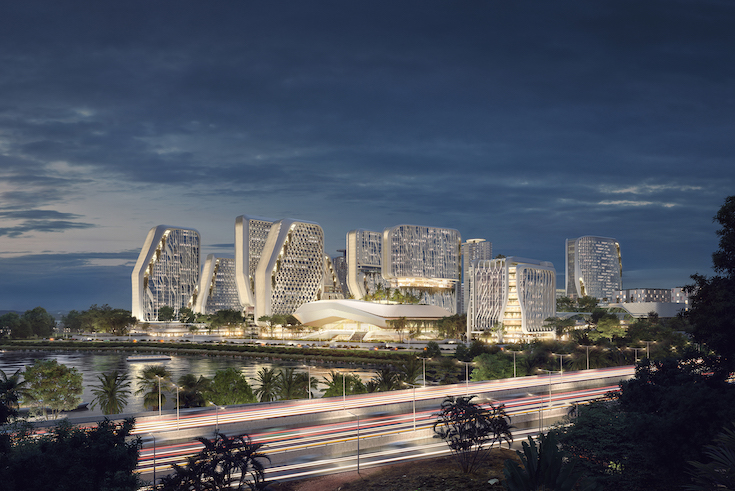Nerman Museum of Contemporary Art

Kyu Sung Woo Architects, an international architectural practice headquartered in Cambridge, Mass. has designed the new Nerman Museum of Contemporary Art in Overland Park, Kansas. The museum, home to a significant collection of contemporary artists including, will bring an exciting new presence to the college-campus when it opens October 20, 2007.
Kyu Sung Woo's contemporary, minimalist building makes a strong statement. This limestone clad and glass enclosed modern structure signals a new entrance to the campus and connects the school to the community. The museum entrance faces outward towards the main streets and a 1.5 acre front lawn leading to the campus, an impressive site for future acquisitions. A dramatic 22-foot cantilever of the main gallery space above the entrance is enhanced by an exterior installation by artist Leo Villareal. His stunning LED display extends the lantern-like effect of the glass façade and supports the connection to the landscape established by the building.
The glass-enclosed lobby runs along one side of the museum front, providing a broad view of its interior from afar and giving a constant sense of activity within. Retaining walls, extending into the landscape, further define the exterior garden, enforce the connection of building to land, and help form the visitor's path. The exterior treatment reflects local materials and context; the selection of limestone for the cladding was in part inspired when excavation revealed this to be the naturally occurring subsurface rock on the site.
The interior provides flexible exhibition space for permanent and temporary shows, as well as educational and social spaces that further connect the museum to campus activity. In the Museum, art and architecture are experienced together as a part of daily life. Daylight is drawn into the building along its perimeter with clerestory skylights that bring light down to wash the walls, creating an association with the outside, a sense of openness and a connection to the passing of time as the quality of light shifts. A double-height atrium wrapped with perforated metal to filter and soften light joins the museum to an adjacent technology center and integrates the museum into campus life.
Kyu Sung Woo's contemporary, minimalist building makes a strong statement. This limestone clad and glass enclosed modern structure signals a new entrance to the campus and connects the school to the community. The museum entrance faces outward towards the main streets and a 1.5 acre front lawn leading to the campus, an impressive site for future acquisitions. A dramatic 22-foot cantilever of the main gallery space above the entrance is enhanced by an exterior installation by artist Leo Villareal. His stunning LED display extends the lantern-like effect of the glass façade and supports the connection to the landscape established by the building.
The glass-enclosed lobby runs along one side of the museum front, providing a broad view of its interior from afar and giving a constant sense of activity within. Retaining walls, extending into the landscape, further define the exterior garden, enforce the connection of building to land, and help form the visitor's path. The exterior treatment reflects local materials and context; the selection of limestone for the cladding was in part inspired when excavation revealed this to be the naturally occurring subsurface rock on the site.
The interior provides flexible exhibition space for permanent and temporary shows, as well as educational and social spaces that further connect the museum to campus activity. In the Museum, art and architecture are experienced together as a part of daily life. Daylight is drawn into the building along its perimeter with clerestory skylights that bring light down to wash the walls, creating an association with the outside, a sense of openness and a connection to the passing of time as the quality of light shifts. A double-height atrium wrapped with perforated metal to filter and soften light joins the museum to an adjacent technology center and integrates the museum into campus life.
